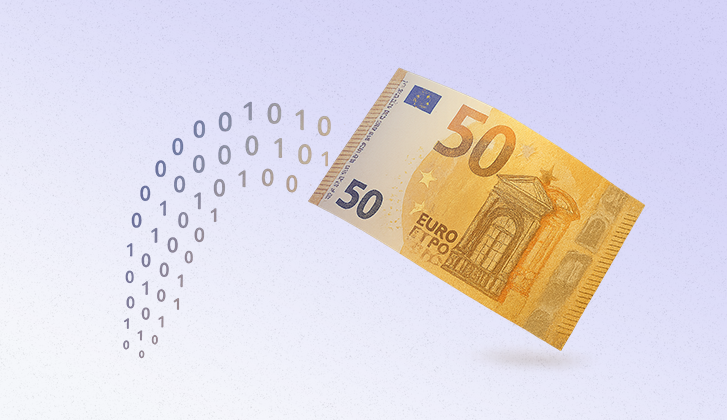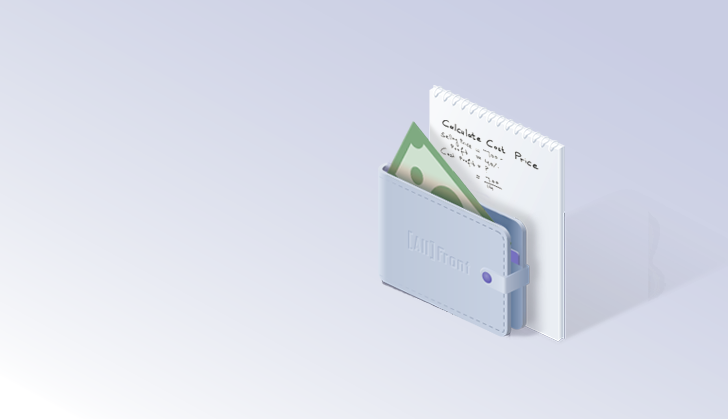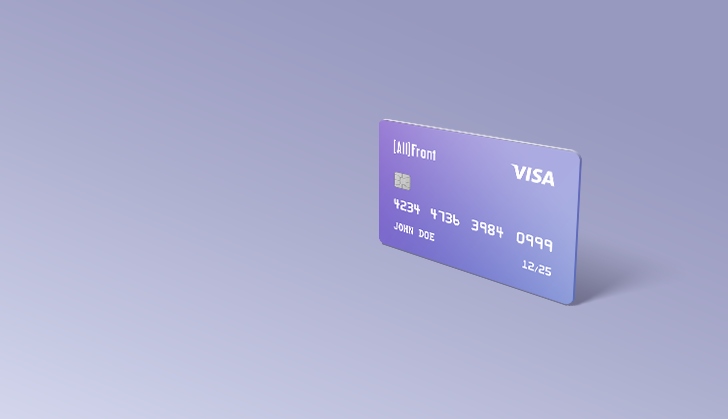Building sustainable apps: Monetization strategies
There are nearly 9 million apps worldwide. With so much competition out there, having a strong monetization strategy is one of the differentiators between apps that make it in the long run and apps that don’t.
To sustain development efforts, design, hosting, maintenance, updates and customer support, you need a solid financial foundation that begins by thinking about your business model and the way your app will generate revenue.
This means picking the right monetization strategy 👇
App monetization strategies
The choice of app monetization model not only determines how you will sustain your product, but it also signals the app’s intended value proposition and relationship with your users. Here are some of the most popular app monetization strategies:
Paid apps (premium model)
The paid, or premium, model requires users to pay a one-time fee upfront to download and install the app. This was the original monetization method used on the app stores. Currently, it’s one of the least popular monetization strategies, with 3% of global apps relying on it to generate revenue, according to Statista.
Still, it has its pros and cons, and it’s worth exploring whether it might be the right choice for your app.
🟢 Pros:
- Generates immediate revenue upon download.
- Users who agree to pay upfront may be more loyal and engaged.
- It offers a cleaner user experience, free from in-app ads or upsell prompts.
🔴 Cons:
- High barrier to entry, users might be hesitant to pay for an app they are unfamiliar with.
- While it generates immediate revenue, sustaining it long-term requires more careful planning with new paid versions or updates.
- Most of the time, you need a strong, widely recognised brand or offer something that users cannot easily find for free to make this model work.
The reality is that users heavily favour free apps, making this model extremely difficult to implement without a strong brand reputation and a compelling value proposition. Almost 97% of Google Play apps and 92% of Apple Store apps are free.
Freemium model
With the freemium model, the app is free to download with a basic set of features. More advanced functionalities, content, or an ad-free experience are reserved for users who pay (often via subscription or a one-time fee).
🟢 Pros:
- Lower barrier to entry, allowing a large user base to experience the core functionality of the app.
- Provides an opportunity to demonstrate the app’s value and convert free users into paying customers.
🔴 Cons:
- Revenue generation is dependent on converting a small percentage of the free user base.
- Maintaining the app for a large, mostly non-paying user base can also be costly.
This model might sound like the perfect middle ground, but it’s often tricky to execute and find the right balance. It can be great for attracting users by removing the initial price barrier, but it’s challenging for developers to provide sufficient incentive for upgrading without alienating free users.
The freemium model works well for apps where a clear distinction can be made between basic and premium features. For example, productivity tools, educational apps, content platforms, and gaming apps where users can pay to enhance their experience.
In-app purchases
In-app purchases generate revenue by letting users buy different items within the app, which is free to download. These items can be consumables (coins, extra lives, hints) or non-consumables (premium features, ad removal, extra levels).
In-app purchases are extremely common and preferred in the mobile gaming space, but they can also work for lifestyle, utility and productivity apps.
🟢 Pros:
- Similar to freemium, in-app purchases offer a low barrier to entry.
- It holds significant revenue potential, often driven by a small percentage of highly engaged users.
- It's flexible for users who can only pay for the items they find valuable.
🔴 Cons:
- Revenue relies on a small fraction of the user base.
- Some users may be resistant to spending money within apps.
With this model, balance is also key. Purchases that feel necessary for basic progression can lead to negative experiences ("pay-to-win") and user frustration.
In-app advertising
In-app advertising lets you generate revenue by displaying ads from third parties within the app. Revenue is usually earned based on impressions, clicks and actions. This model is probably the most popular one, with 31% of apps globally adopting it.
🟢 Pros:
- Keeps the app free to download and use.
- It offers flexibility in terms of ad format and is relatively straightforward to implement.
🔴 Cons:
- Ads can be intrusive and disruptive if not implemented carefully.
- Revenue is dependent on the size of your user base and how active and engaged they are.
Subscription model
The subscription model involves charging users a recurring fee (weekly, monthly or annually) for access to the app's core functionality, premium content, or exclusive features. This model often includes tiered plans offering different levels of access or features.
🟢 Pros:
- Provides a stable and predictable revenue stream.
- Encourages user engagement and a loyal customer base.
🔴 Cons:
- You need to consistently deliver sufficient value (new content, features, services) to justify the recurring cost.
- Users can be hesitant to commit to ongoing payments.
This model is best suited for apps that naturally provide ongoing value or regularly updated content, such as streaming platforms, news and magazine apps, educational platforms, and cloud storage.
Hybrid models
You can also choose to combine two or more monetization models to create a strategy that works best for your app and your users. For example, a popular hybrid model is combining freemium with in-app advertising for non-paying users.
🟢 Pros:
- Maximizes revenue potential by catering to different user segments with different preferences and willingness to pay.
- Multiple income streams with no dependency on a single model and better financial stability.
🔴 Cons:
- Managing multiple monetization systems adds complexity to development and operations.
- You need to be careful that different models don't create conflicting or negative user experiences.
More ways to monetize your app

The strategies listed above are probably the most widely used and popular ways to monetize an app, but there are also several other methods that you may find are better suited for your product, or can complement your core model.
These can be:
- Affiliate marketing: You can earn commission by promoting third-party products or services within the app and driving sales or leads through referral links or codes. This model fits naturally into apps where recommendations are already a part of the experience, such as travel apps, shopping assistants, comparison tools, and content apps. The key is to keep it relevant and trustworthy, so it doesn't feel like spam.
- Data licensing: Some apps choose to generate revenue by collecting anonymized user data and selling it to third parties for research or advertising purposes. However, this approach is somewhat controversial as it carries privacy risks and you need to follow strict regulations for transparency and user consent.
- Pay-per-use: This model charges users only when they use specific features, access content, or complete transactions. It’s great for tools that solve occasional, high-value problems (AI image generators, file converters, cloud storage). It offers flexibility and lowers the barrier to entry while still generating revenue based on actual usage.
- Donations & crowdfunding: There are platforms like Kickstarter or Patreon where you can directly ask people for financial support to maintain or build your app. You need to have a strong community of people who share your vision to make this model work.
Monetization strategies comparison
| Model | Description | Pros | Cons | Best suited for |
|---|---|---|---|---|
| Paid | One-time fee to download. | Immediate revenue per download, more engaged users, ad-free UX. | High barrier to entry, lower download volume, difficult to sustain long-term. | Niche/high-value apps, strong brands, apps with no free alternatives. |
| Freemium | Free basic version, pay for premium features. | High user acquisition, upsell potential. | Balancing free vs. paid. | Apps with clear feature tiers. |
| In-app purchases | Users buy virtual goods, currency, features, or content within the app. | Low entry barrier, high revenue potential from engaged users, flexible. | Revenue relies on a small % of users, balancing free/paid content. | Gaming apps. |
| In-app ads | Revenue is generated from displaying ads to users. | Monetizes non-paying users. | Can be intrusive, lower revenue per user, requires large scale. | Apps with large, active user bases, high engagement apps (casual games, social, utility). |
| Subscription | Recurring fee for access. | Predictable recurring revenue, promotes loyalty. | Requires constant value delivery, churn risk, initial commitment barrier. | Content (news, streaming), Services (fitness, productivity, cloud), B2B apps. |
| Hybrid | Combining two or more models. | Maximizes revenue streams, caters to diverse users. | More complexity, risk of conflicting UX. | Most app types, especially with diverse user bases and features. |
How to choose the right monetization model
Developing a successful app monetization strategy requires an in-depth understanding of the unique context of the app, its users, and the market. Be sure to:
Set clear goals
To choose the right monetization model, you need to be set on what your app is going to do and who the target audience is. The monetization model should reinforce the purpose of the app. When your pricing structure aligns with what the app is trying to help users achieve, it becomes a natural extension of the value you're providing.
Know your target audience
Casual users may be more tolerant of ads in exchange for free access, while enterprise customers are more likely to pay for premium features if the app saves them time or improves productivity. Price sensitivity also plays a big role. Younger audiences or users in certain regions may prefer in-app purchases over monthly fees. It’s all about knowing your users, their willingness to pay and how they perceive value.
Consider industry standards
In media and entertainment, subscriptions are standard because users are used to paying monthly for content access. In mobile gaming, in-app purchases and advertising are mostly used. In B2B software, usage-based pricing or per-seat licenses are accepted.
Studying the business models of other successful apps in your space can give you a realistic sense of what users expect and what might work. Industry standards can be helpful guidelines, because familiar patterns reduce friction when users engage with your product.
Analyze the competition
While considering industry norms is important, it’s also important to look at what feedback your competitors are getting from reviews, forums and app store comments. This can give you an idea of how you might differentiate or fill gaps.
Prioritize user experience
Monetization should feel like a natural extension of your product, not a barrier. Intrusive ads or paywalls can hurt engagement. The right model balances revenue with retention. Pricing should be transparent, intuitive, and fair.
Bottom line
Your monetization strategy is one of the first important decisions you need to make. It’s a decision that takes a lot of research, careful planning and a clear understanding of the app you’re trying to build. You should choose the model or a combination of models that reinforces your app’s purpose, resonates with your audience and feels natural to the user journey.
Be prepared for a scenario where a model that has been working perfectly fine no longer supports your vision or fits in with your users. Make sure you regularly reassess based on user feedback and market shifts.
Also, keep pricing fair, clear, transparent and directly proportional to the value you’re providing. Ideally, you need to find the perfect middle ground where you can maximise revenue potential without sacrificing user trust and product integrity.




